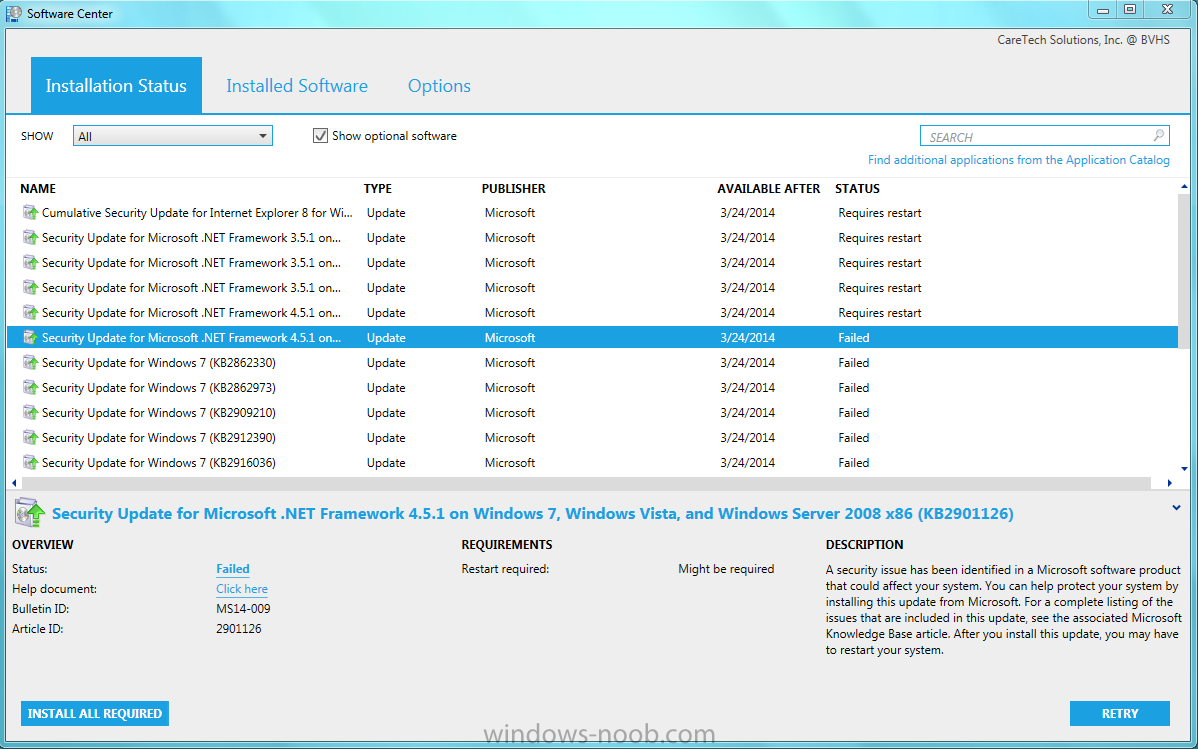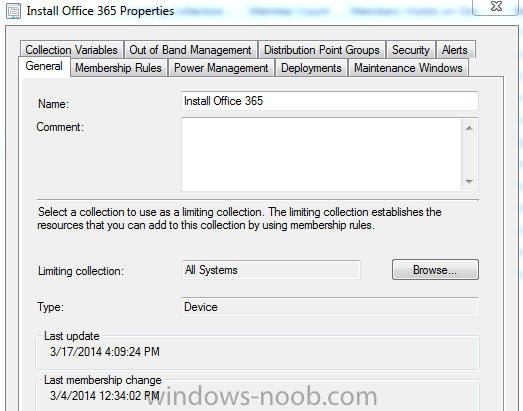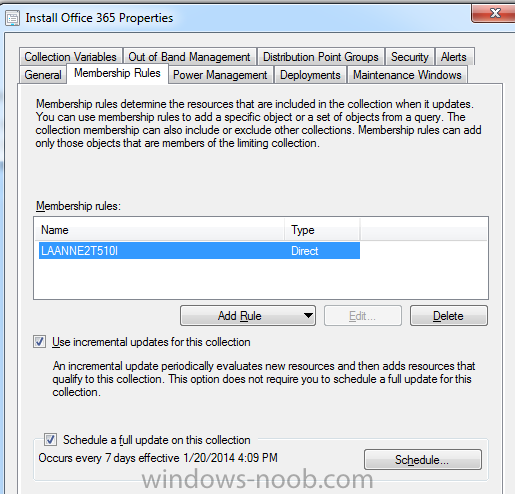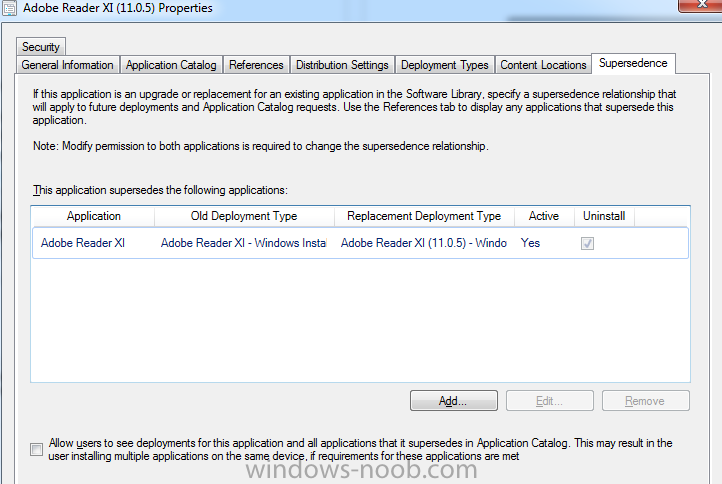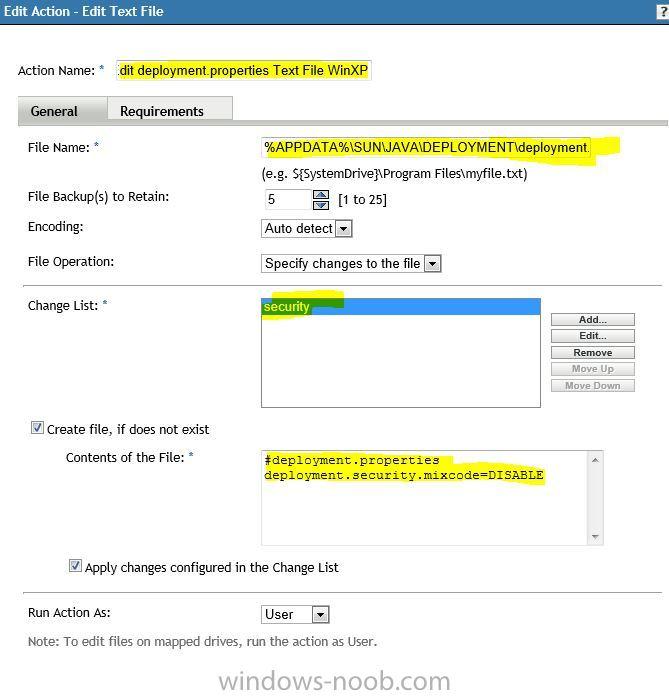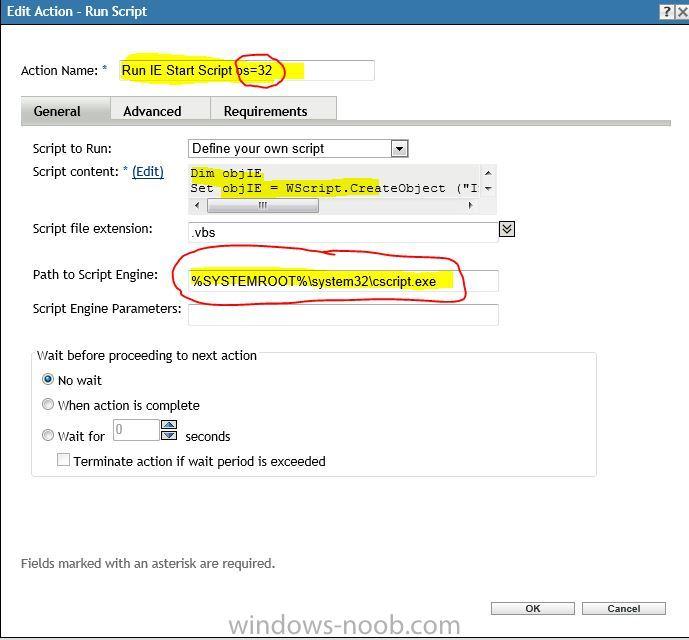Search the Community
Showing results for tags 'SCCM 2012'.
-
Hi , I am running into a issue when I try to deploy the task sequence to install operating system from secondary server. Here is my issue : In our environment we have 1 primary and 6 secondary site. Initially we built the primary site and tested the OS deployment . It went well without any issues . As the primary site is working fine we have configured other secondary sites . So I wanted to test the deployment s from Secondary server . For this I have changed the DHCP option 66 value to my secondary server IP. When I PXE boot the computer , I can see that the client is contacting the secondary server . This is the message I see on the client computer screen Contacting server : xx.xx.xx.xx TFTP download : smsboot\x64\abortpxe.com PXE boot aborted , booting to next device As the error is generic and was not much helpful , I checked SMSPXE.log in secondary server it says no advertisements found . I have attached SMSpxe.log . I have enabled PXE & Unknown computer support on secondary server . All the content is available on secondary site DP . I have restarted WDS service several times but it is of no use . I have tried this on 2-3 machines assuming the machine MAC id was stored in SCCM database . on every machine it is the same behavior . This is happening only with secondary server . If I change the option 66 value back to my primary server IP , the same deployment is working fine . I am struggling to find the cause for this behavior . Does any one has any idea on where should I look to resolve this problem or to dig deeper Thanks in Advance , Kishore SMSPXE.log
-
Good morning all, As stated in the title, i'm trying to get Software Updates through SCCM 2012 going and I'm stuck because i'm used to the old school way of doing this on a standalone WSUS server. After I had already installed the WSUS role as well as SUP I looked at the guide generously posted by anyweb here : http://www.windows-noob.com/forums/index.php?/topic/5683-using-system-center-2012-configuration-manager-part-5-adding-wsus-adding-the-sup-role-deploying-the-configuration-manager-client-agent/ I noticed the few differences in my setup and his was I was installing using Server 2012, and at no point do I remember it asking me if I wanted to setup a default WSUS webpage. I know in standalone WSUS you had to setup IIS website for clients, but is that required for SCCM deployment? What I've done is the following: 1) added WSUS role to Server 2012 server 2) added SUP role in SCCM 3) I've setup my classifications / programs requiring updates and synchronized 4) downloaded Windows 7 updates and put them into a Windows 7 Updates group 5) now i'm stuck. I'm honestly ignorant to the way that SCCM deploys updates, and I think it's because i'm stuck to the way WSUS worked in the standalone and i'm over-thinking it. Can anyone point me in the right direction? I believe most if not all on the SCCM side is setup correctly, for all are online/ok in Component Status under monitoring...I just need a point in the right direction on how to grasp the logic of how to obtain / deploy with SCCM. I know it's a lot easier than i'm making it, just need some help Any help is greatly appreciated, thank you!
-
In our live production environment I have deleted some device collections that had active application, package and Task Sequence deployments. After I deleted these device collections it triggered a re-replication of all content. The logs show my account deleting the collections from the CAS but for all the packages and applications the logs say I "modified the package properties of a package named" XYZ. but in the logs it says I performed these actions from a "Unknown Machine". Any body else seen this or experience this before?
-
Hello, this is my first post and I am glad to join windows-noob forum. I am a noob and new to SCCM and I hope I will find some help here. I am having troubles deploying a simple batch script that will remove some installations. Content of the script: @echo off ::Silent remove openedge 10.1B "C:\Program Files\InstallShield Installation Information\{874D5CE4-F913-4D5B-A6D4-CC129785B5C8}\setup.exe" /s /f1\\srvsccm01\sources$\Uninstall\proalpha5.1\add.iss /Z /Q ::Silent remove proalpha 5.1 MsiExec.exe /X{09FD2FA3-330F-4E8A-BF33-078C8B5D1032} /qn ::Silent remove proalpha Analyzer 7.0 MsiExec.exe /X{D8BF41E2-D1C0-4A85-9DE9-D16675FA904C} /qn If I copy the bat file to a client and run it locally it will work 100%. This is what I did on my SCCM. - I have copied the bat file to the sccm server: \\srvsccm01\sources$\proALPHA5.2\pa-client-silent.bat - Created a new package with the source files mentioned above - In command line window I just selected my bat file from the above location. - configured to run it with UNC name Then I deployed it to my test machine with the option: Download content from distribution point and run locally. However it will not work. SCCM will tell me that the deployment was succesful and 100% compliance but the script is not running. I can easily deploy MSI applications and it will work. I think my issue here is working with UNC paths in bath file. Can someone help me?
-
I have been setting up SCCM 2012 in a lab environment and to be completely honest, I have no idea what I'm doing regarding the patching aspect. I took a beta 4 day in-class class and have my book, so I'm not totally running blind, but I'm still lost. I setup a site server named LAB-WSUS that had WSUS 3.0 SP2 installed and downloaded updates. Why does it appear my SCCM CAS is going directly out to Microsoft.com for updates? Shouldn't it be going to the WSUS server? Isn't that the point of the SUP site server? When I downloaded the patches, it asked me where to put the "package.". It just downloaded all of the patches onto the SCCM CAS server (per my direction). I setup a deployment package and chose to deploy to one of the device collections I have setup. I have no GPOs set to point those servers to the appropriate WSUS server, but why do they have to? It appears that my SCCM server is doing all the work. Thanks in advance!!!! Juice
-
My SCCM admin and I have been trying to figure this problem out for a while now. Our app can create task sequences without issue for a test workstation between the hours of 1PM and 10AM. BUT then for no reason we can find at 10:00:01 AM task sequences for this device start failing to be created with the error below. This goes on till exactly 1PM then everything's fine again. ConfigMgr Error Object: instance of SMS_ExtendedStatus { Description = "Failed to save the TS package instance due to error 80041001"; ErrorCode = 1078462229; File = "e:\\nts_sccm_release\\sms\\siteserver\\sdk_provider\\smsprov\\ssptspackage.cpp"; Line = 3370; Operation = "ExecMethod"; ParameterInfo = "SMS_TaskSequencePackage"; ProviderName = "WinMgmt"; StatusCode = 2147749889; }; The method that is being called that is doing the failing is: IResultObject result = sccmConn.ExecuteMethod("SMS_TaskSequencePackage", "SetSequence", inParams); During this same time however we can create task sequences with the same code without issue. We cant find anything in the logs in configmon console. Has anyone experienced this in the past? Any help would be appreciated.
-
I have multiple DPs in my environment, but one in particular seems to be having issues with OSD. Right at the very start of the Task Sequence, it calls to download MDT Toolkit and immediately fails (log snippets below). I have uninstalled the DP and reinstalled it a couple of times, but this DP just can't seem to get past the MDT Toolkit. I have even redistributed the MDT Toolkit numerous times. On my other DPs, which followed the same procedures for setup, do not have this issue. Does anyone have any ideas? What worries me is these lines in the logs: socket 'connect' failed; 80072724d sending with winhttp failed; 80072efd Download() failed. 80072efd. Failed to resolve the source for SMS PKGID=LBT000D3, hr=0x80070002 Install Software failed to run command line, hr=0x80070002 Failed to run the action: Use Toolkit Package. The system cannot find the file specified. (Error: 80070002; Source: Windows) The system does have an active IP and can access the DP, so I am not sure why these are failing.
-
Hi Everyone, I've been stuck for the past few days. After upgrading SCCM 2012 to R2, I have been having issues with OSD. I recreated my Task Sequence after the update and recreated all dependencies (MDT Toolkit, USMT, CM Client, boot images, etc). The Task Sequence itself still follows the same flow as I had before (which was working). Now, after completing the "Setup Windows and ConfigMgr" TS, the computer reboots to OS (as it should by default), and then Windows stops during boot with the message: "Windows could not configure one or more system components. To install Windows, restart the computer and then restart the installation." As this is not in WinPE environment, I cannot F8 to see what happened here. Googling this error, I saw many people point to KMDF 1.11 not being in the base image. I checked my image and do have this in place, so this is not the culprit. I do not believe it to be driver related either, as I am using the same driver packs as I did previously which worked. I do not see any errors in SMSTS.log either. Anyone run into this problem or can provide some advice of what might be going on?
-
I have just started pushing out updates via SCCM 2012. I downloaded the updates into a separate WSUS folder, created a deployment package and software update group and deployed the updates. When I look on the system, it shows the updates are there, but all of them failed. When I click retry in software center, they install just fine. What am I missing that these install manually but not automatically like the deployment was setup to do? **Update** Some of the pc's received the updates just fine, others did not. Not sure what the difference is yet, but I'll keep looking into it. I do see a bunch of "errors" in the UpdatesDeployment.log which state: Update (Site_xxxxx) not actionable, no attempt required." What does that mean?
- 7 replies
-
- SCCM 2012
- windows updates
-
(and 1 more)
Tagged with:
-
Hi all, Attempting to automate the deployment of CRM 2013 to Windows 7 Office 2010. Struggling with getting the right command to deploy it quietly and passively. Any advice? All I could find online was CRM 2011 and SCCM 2007. Thanks!
-
Good Morning Guys / Niall - This morning we had some issues testing OSD builds in our SCCM 2012 SP1 CU2 environment. We used a USB drive we made into boot media a few days ago to boot up an "Unknown Computer." After clicking the initial "Next," we got the error 0x80004005 instead of no task sequences being listed. I tried re-creating the media (Dynamic), but still got the same error. After research, I re-created the media once more with the same settings - except - used "Site-Based" instead of "Dynamic" and it worked as I am now displayed a list of task sequences to run. Why would "Site-Based" media work and "Dynamic" media not? Below are some environment details as well as other things I examined... Primary server is remote to location, but do have a local secondary Boot Image Config I used on all 3 times I tried above: - Boot Image: Selected Image - Distribution Point - Selected Local Secondary - Management Point - Selected Primary Server (only option) IP was retrieved on machine via DHCP. After opening a command prompt, I could ping both primary and secondary servers Verified machine's IP (via DHCP) was in a boundary (It's Subnet was entered). Boundary was assigned to the proper local secondary In the log file, there was only a couple of lines which noted errors (besides PXE which we don't use) Attached is the smsts.log file - just in case - names were changed for security... smsts.log Any ideas? Thank Guys!
- 2 replies
-
- SCCM 2012
- site-based
- (and 3 more)
-
Hi, I have a problem with supersedence. Client have win 7, office 2010, language pack and proofing tools. We want to upgrade to Office 365. Then we have to uninstall all Office 2010 products, and then install Office 365. I have used supersedence and created a device collection. This is limited to all systems, and membership rules I used direct. I have just added one client to this collection and done the office 365 deployment to this collection. Office 2010 are uninstalled and Office 365 are installed, but the problem are that other client then I have added to the collection got this application package. I don't understand why. Se picture for more information. I have experience the same problem on the Adobe reader 11.0.5 package I have made. This have also a supersedence. When I deploy a new maskin it have adobe reader 11.0.5 installed, but somehow it reinstall after a while. Some client it just uninstall without install again. I have just one deployment on this. It deployed to all system, but with direct rule. And I have just added some client to this collection. Could it be some problem with the supersedence or problem with device collection? Thanks for feedback
-
Hi All, Does anyone know if there is a way to filter clients that have failed on a software deployment. What I've done is deploy software to 250 computers and only half of them have succeeded, I then re ran the deployment to see if anymore would succeed however there was no change. What I would like to do is group the failed clients into a device collection and uninstall the software and then try reinstalling it. Any help would be greatly appreciated. Pete
-
We have 24 sites and I'm having an issue with just one and I'm not sure what else to look at. I've tested in vmware and hardware. The task sequence applies the wim file and then hangs for a bit, then comes up with an error 0x80070002. The smsts.log time never changes and the event is not recorded and the stamp date on the log does not change. Once you reboot you get a vanilla windows 7 installation. I have also redistributed the os image to the site and it's in the smspkgz$ directory.
-
I have an issue with our SCCM 2012 SMP not deleting files on the schedule dictated in the settings (5 days). Attached is a screen shot of the Task Sequence where the loadstate is requested and the release state store should be occurring. Any suggestions are welcome. I can include additional data if helpful. Matt
-
We have been using ZENWorks and we have our 2012 R2 SCCM Site up and running ... So far so good... now, I am working on packaging about 50 Applications. I have one application that I am having issues with. (if you can call it an application it is a shortcut placed on desktop and it opens an IE browser - it uses the jave JRE). I will describe how it is done in Zen and may be someone can help me achieve my goal. In advance Thank you all for everything thing that you do, it is greatly appreciated. The first time I deploy the Application - 1. Install (Install Tab In Zen) Install Java 1.6 Reg Edit Edit Deployement.Properties Text File Win7 Edit Deployement.Properties Text File WinXP Example: See image 1 2. Launch (Launch Tab in Zen) I run the following Actions: they run a vbScript Run IE Start Script os=32 --- Path (%SYSTEMROOT%\system32\cscript.exe) Run IE Start Script os=64 --- Path (%SYSTEMROOT%\SYSWOW64\cscript.exe) The actual Script is the following Dim objIE Set objIE = WScript.CreateObject ("InternetExplorer.Application") ObjIE.Width = 1024 ObjIE.Height = 815 ObjIE.Toolbar = false objIE.Navigate "http://ora-app.abcdefg.com:7778/forms/frmservlet?config=abcdefg" objIE.Visible = true See Image 2 Also, in Zen I am able to Edit the Icon and tell it to go to each user's desktop and startup folder (list) fairly easily - i believe the controls are given. I know I will need to create a script, copy the Icon to the local System etc... but if someone can tell me some ways of achieving this, I will greatly appreciate it.
-
I'm looking for a way to deliver all available applications to the desktop support team so it will be available when they visit a customers desk. We have applications that aren't available to all users or user groups however we want all of those applications made available to the desktop support group when they visit the customer. We do have User Device Affinity enabled. Consider the scenario where a manager logs onto a subordinates workstation temporarily, if the system is not designated as his primary device, any applications specifically targeted at the managers primary devices will not be available to him on that system. The best solution I've come up with is to create an AD Security group, add the desktop support team to the security group, make that group available in SCCM 2012 then deploy all applications as available to this group. However when I do this sometimes all of the applications do not show up for the desktop technician. What is the best practice for achieving this goal?
-
- SCCM 2012
- User Centric
- (and 4 more)
-
Hello All, I have tried searching but have not found anything that covers my specific need/concerns. I am trying to deploy a clean install of Windows 7. That part completes successfully however Windows 7 does not have the drivers for the network adapter built in. As soon as windows deploys, communication with SCCM and the rest of the world halts. What can I add to the task sequence to make sure that the driver is downloaded to the machine before/during the windows install? My Build: SCCM 2012 Sp1 CU3 Windows Server 2008 R2
-
OK, so here's my scenario. I've created two Applications each of which have more than 1 Application Type. When I created and tested them both with a deployment to a collection and during OSD with PXE they work fine. What is "special" I think about them though is that I have made the dependencies for the Application Types are in the same Application. When I try to run the Task Sequence on a Stand-Alone USB drive is NOT connected to the network these two Applications do not install. If I run the same Task Sequence on the same Stand-Alone USB drive the TS fails. So in case I'm not clear on how the Application\Deployment Type is set up let me try and diagram it Application 1 -Deployment Type 1 - Patch .0.5 -Deployment Type 2 - Patch .1 -Deployment Type 3 - MSI v1 The application is called Patch .05 is called and has a dependency of Patch .1 Patch .1 has a dependency of the MSI The MSI is installed, then Patch .1 is installed, then Patch .05 is installed resulting in a fully patched version of the original MSI v1.1.5 Application 2 is pretty much the same logic as Application 1, just with only 2 Deployment Types. My question is, why will these run correctly when the client machine is connected to the network, but when run on a Stand-Alone USB and not connected they fail? I have other applications that call other applications in the same TS and those work fine, so it seems that SCCM doesn't like the dependency being in the SAME application. If I have to I will break them out into separate applications, but that seem pretty silly! I can provide SMSTS and AppEnforcement logs or whatever logs I can get from the client if needed.
-
- sccm 2012
- application
-
(and 1 more)
Tagged with:
-
Hello all, For a client, we have a number of small offices with a local IT resource in charge of the systems there, something thing 45 offices. We've created query based collections to limit the local IT to seeing only their computers in the console, and this is working fine. However, we also have a large number of Software Distribution collections, and we want local IT to be able to place the users in those collections to deploy software. How do I allow the local IT user to do so, without having to manually add Application Deployment Manager to each one of these collections, for each one of the offices? Is there a better way? I'm still trying to understand Role based access and control, and did extensive googling before posting here. Thanks,
-
Hi, we have single SCCM 2012 SP1 server on our internal network. It has been managing internal clients across our network successfully (including software deployments). Now we want to be able to manage our clients when they roam off our network. I've setup the autoenrolment for the Client Certificates, and used a Layer 4 reverse proxy (haproxy + stunnel) to allow traffic to go from the Internet into our SCCM server. As our internal and external domain names are different, our reverse proxy terminates the SSL connection and retransmits to the SCCM server. Only port 443 is reverse proxied. I've redeployed the SCCM client out with the CCMHOSTNAME=external.address.com. My tests have shown that clients while in the Internet can see software that is deployed to them, but if I try to install the software I get a failure. The Console also reports that the Client is inactive (so it hasn't been checking in). Are there any other ports that need to be proxied in? Is the certificate difference causing an issue?
- 5 replies
-
- reverse proxy
- internet based client
-
(and 1 more)
Tagged with:
-
I have a working Primary SCCM 2012 SP1 server in my environment. Now company has acquired another company which is in another domain and forest. We are in the process of migrating them to our domain. Problem is another company already has an SCCM 2012 server with 300 client and they want to join that server to our existing SCCM 2012 primary server and they want to manage the patches and OSD through it. Can someone please guide if i need to uninstall their sccm client and push the sccm client from my domain or is there any way to migrate? If migration is possible can someone please provide an overview of the steps required to achieve this.
-
For the last 3 months I've had some spotty issues with WSUS on my SCCM 2012 SP1 site. The biggest issue seems to be that every month, one or two servers seems to get one update a week or longer after every other server does. Not only that, but it installs the "lagged" update in the middle of the day, violating the maintenance window, and I do not have the deadline behavior set to override the maintenance window on the deployment. The most recent example is it installed IE 10 in the middle of the day, and then rebooted the server. I deployed the IE10 update in December 2013, and EVERY other server received this update then, and I've had this VM for 3 years now, so it's not like it's a new server that was just a little slow picking up the updates. I have zero explanation for how this happened. This is so bizarre. Any help would be appreciated! Thank you!
-
Hi, In SCCM 2012, we have a task sequence that installs package in the very end after setting up operating system. We have tried two approaches: 1. Using Install package step (the package has a program associated with it which executes the vb script eventually) 2. Using Run Command line step (in command line executing script and attach the package. The second approach executes fine but the first approach halts on executing the script (sometime it hangs there forever). A few times we have seen an error that it doesn't find the file specified (in smsts.log) Since the script is executed in secondapproach, there should not be any issue in script. Any help, suggestion is welcomed for first approach because that's how we want to install package as it works in SCCM 2007. FYI, this is on SCCM 2012 RC build. Thanks,
- 2 replies
-
- install package
- SCCM 2012
-
(and 1 more)
Tagged with:
-
Hi, i am running into a major issue with my task sequence. i am trying to deploy a capture and OSD. when i make it required it does not automatically run. it used to in the past but all of sudden it stopped. so i would deploy the task sequence make it required and nothing happens. i would also manually run the machine policy. when i make it available and manually run the machine policy it shows up. has anyone encountered this issue?




